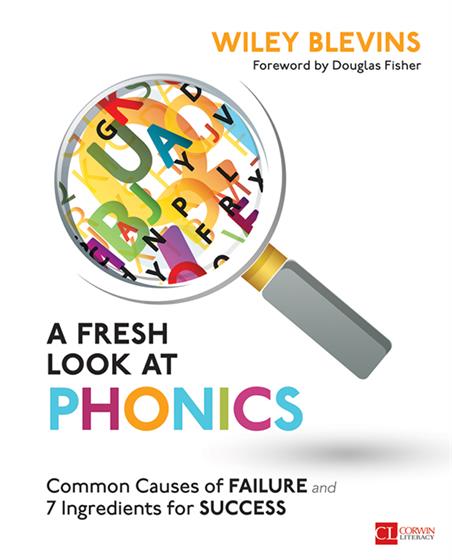Section 1: The Key Ingredients for Phonics Success
Success Ingredient 1: Readiness Skills
Background and Key Characteristics
Best Practices and Look-Fors for Success
Common Instructional Pitfalls
Day Clinic: Examine Your Practices
Next Steps to Leap Forward
Success Ingredient 2: Scope and Sequence
Background and Key Characteristics
Best Practices and Look-Fors for Success
Common Instructional Pitfalls
Day Clinic: Examine Your Practices
Next Steps to Leap Forward
Success Ingredient 3: Blending
Background and Key Characteristics
Best Practices and Look-Fors for Success
Common Instructional Pitfalls
Day Clinic: Examine Your Practices
Next Steps to Leap Forward
Success Ingredient 4: Dictation
Background and Key Characteristics
Best Practices and Look-Fors for Success
Common Instructional Pitfalls
Day Clinic: Examine Your Practices
Next Steps to Leap Forward
Success Ingredient 5: Word Awareness Activities (Word Building and Word Sorts)
Background and Key Characteristics
Best Practices and Look-Fors for Success
Common Instructional Pitfalls
Day Clinic: Examine Your Practices
Next Steps to Leap Forward
Success Ingredient 6: High-Frequency Words
Background and Key Characteristics
Best Practices and Look-Fors for Success
Common Instructional Pitfalls
Day Clinic: Examine Your Practices
Next Steps to Leap Forward
Success Ingredient 7: Reading Connected Text
Background and Key Characteristics
Best Practices and Look-Fors for Success
Common Instructional Pitfalls
Day Clinic: Examine Your Practices
Next Steps to Leap Forward
Plus One More Essential Success Ingredient: You!
Section 2: 10 Common Causes of Phonics Instruction Failure
Introduction
Reason 1: Inadequate or Nonexistent Review and Repetition
The Problem
How to Fix It
Reason 2: Lack of Application to Real Reading and Writing Experiences
The Problem
How to Fix It
Reason 3: Inappropriate Reading Materials to Practice Skills
The Problem
How to Fix It
Reason 4: Ineffective Use of the Gradual Release Model
The Problem
How to Fix It
Reason 5: Too Much Time Lost During Transitions
The Problem
How to Fix It
Reason 6: Limited Teacher Knowledge of Research-Based Phonics Routines and Linguistics
The Problem
How to Fix It
Reason 7: Inappropriate Pacing of Lessons
The Problem
How to Fix It
Reason 8: No Comprehensive or Cumulative Mastery Assessment Tools
The Problem
How to Fix It
Reason 9: Transitioning to Multisyllabic Words Too Late
The Problem
How to Fix It
Reason 10: Overdoing It (Especially Isolated Skill Work)
The Problem
How to Fix It
Closing Thoughts
References



